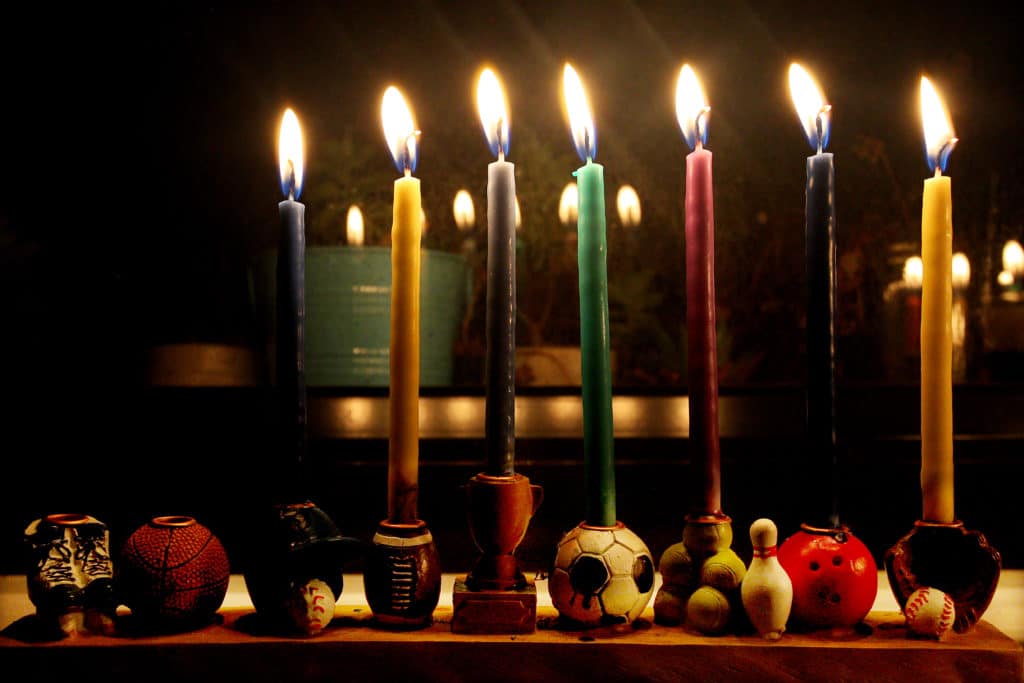One of the great teachers in my life was my orchestra conductor at summer music camp. His name is Larry Livingston.
Larry served for many years as the dean of the music school at the University of Southern California, and he’s a legendary and beloved teacher and conductor by students around the world. And for me, Larry — despite the fact that he isn’t Jewish — is someone I refer to as my musical rebbe.

Among the many lessons Larry taught me was one about the value of patience and commitment. In a world in which so much is about instant gratification — like, literally: I needed a new pair of AirPods last week and they arrived within three hours of my ordering them on Amazon; it’s nuts — Larry reminded all of us young musicians about the value of having a craft like playing an instrument.
It takes thousands of hours to learn and master. Changes happen subtly over time, not instantaneously. And there really aren’t any shortcuts. You have to be committed. And, in that commitment, you learn some profound lessons about perseverance and love.
As I’ve gotten older, I’ve come to appreciate Larry’s wisdom. Music-making proved to be more of a challenge to sustain as a craft once family and career became central in my life.
But writing, Torah study, and my spiritual practice are definitely crafts: They’re things I approach with a sense of purpose and commitment. They’re creative and expressive endeavors.
I find they keep me humble, because they have no shortcuts. But they’re also things where I can see my own slow growth over time, the ways I’ve become more skilled — and the even larger ways in which I still aim to grow and develop.
This episode is airing as we’re about to celebrate Hanukkah, and I think the holiday evokes a lot of these lessons from my conducting rebbe about craft.
And it may seem counterintuitive, because a lot of the stories we tell ourselves about Hanukkah are kind of superhero stories: this miraculous triumph of light over darkness, good over evil, the tiny cruze of oil that lasted for eight nights.
It has become, for many of us, a children’s holiday about the instant gratification of receiving a present. Perhaps, to borrow a phrase from our Christian neighbors, we need to remember the reason for the season a little more.
So here’s another way to understand Hanukkah. Hanukkah is about light, which is both extraordinarily powerful and, in the form of a candle, extraordinarily fragile.
Hanukkah is about gradually adding light — one candle for each night. Hanukkah is about being committed to doing the practice of lighting the menorah every day of the holiday.
Hanukkah is about proudly and courageously sharing our light with our neighbors as we place our menorah in the window. Hanukkah is about dedication — which is what the work Hanukkah literally means.
Yet while Hanukkah is all of these things, the central ritual of the holiday is one that can honestly feel a little skimpy. It doesn’t take much time to sing the blessings and light the candles. And then, in our house anyway, it can feel like that’s it — we’re done. On to latkes, presents, dreidel-playing.
For that reason, I want to offer a practice you can do to tap into the sense of dedication a little more deeply during Hanukkah.
If you’re lighting the candles with other people, you can either tell them that you’d like to do this–or you might even put this practice on speaker and invite them to join you. The more the merrier!
Before you light the candles, take a few moments to settle into your body. You can do this sitting or standing–whatever works for you. Take a few good deep breaths, and become aware of your breathing.
Take a moment to scan your body. Be aware of any place you might be holding some tension — in your legs, your arms, your eyes, your jaw. Bring some softness to these places if they need them.
Now prepare to light the flames. You might visualize for yourself an ancestor — this could be a biological or a spiritual ancestor — who lit these same flames sometime in the past.
And see if you can visualize another ancestor with them. And another, and another. Perhaps you can even sense in your mind a whole chain of ancestors lighting their Hanukkah candles — and you’re the next link in this chain.
See if you can sense the connection between you. Here you are, doing this same ritual that they did. What a profound gift and responsibility.
Say the blessings and light the candles according to your own custom. And then, after you’ve lit them, bring your attention to the flames. Really look at them.
Try to notice the different parts of the flame: the wick, the dark halo surrounding it, the soft blue layer, the larger orange one. Try to notice where the flame begins and ends, the soft edges between light and shadow.
And now, as another visualization, try to bring the warmth of the flame into your heart. Imagine the light of loving awareness illuminating the areas inside — areas of fear, depression, chaos, or emotions you sense some resistance to acknowledge.
Allow the flame to soften up that resistance. Allow it to bring warmth to parts of you that might feel disconnected or cold. You are warming yourself with the light and heat of rededication.
Finally, visualize bringing your light out into the world. A great miracle has happened — inside you. See if you can feel all those ancestors strengthening and encouraging you as you take the light of Hanukkah into the night and beyond.
Blessings for the journey, know that I’m on it with you. And blessings for a happy and renewing Hanukkah.